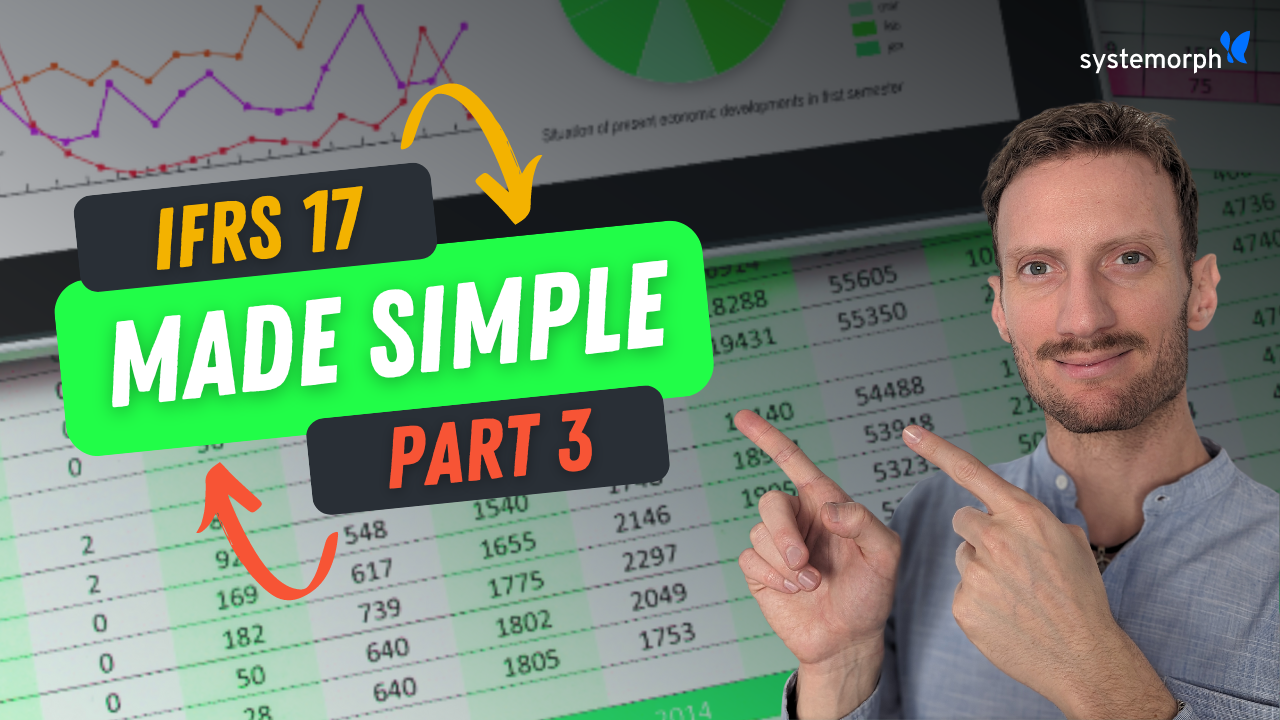Empowering Swiss Re with an innovative IFRS17 solution to support its clients in evaluating reinsurance transactions.

Check Claudio’s LinkedIn profile.
Claudio Tröhler, Transactional Executive P&C Structured Solutions at Swiss Re, unveils the groundbreaking PAA Calculator, a precision tool custom-built by our team.
What exactly is the Premium Allocation Approach (PAA) Calculator?
Claudio: The PAA Calculator is an application calculating the economics of a reinsurance transaction according to the IFRS17 reporting standards. It serves two primary functions:
PAA Eligibility Test: It assesses whether reinsurance transactions qualify for PAA accounting under IFRS17 by performing a quantitative evaluation for different scenarios under PAA and BBA.
Impact Estimation: It estimates the impact of reinsurance transactions on the client’s portfolio by providing the Liability side of the Balance Sheet (LRC and LIC), as well as the Financial Performance, calculated for the current and all future periods until expiration.
What is the use case for Swiss Re? I mean: How do you use it?
Claudio: At Swiss Re we always strive to serve our clients in the best way possible. Since January 2023, many of our clients have been delivering their financial results under the IFRS17 reporting standards. Therefore, it is of vital importance for them to evaluate the effects of a reinsurance transaction under such standard, already before closing the transaction itself. It is a key step in their decision-making process for the transaction. Thanks to the PAA Calculator we can now offer such a service to our clients.
How was the collaboration with Systemorph in developing the PAA Calculator?
Claudio: We had a very short time window of opportunity to develop this application. Systemorph had the right mindset and can-do attitude for the task. Obviously, we had our ups and downs throughout the collaboration – such moments belong to a challenging and ambitious project! But I really appreciated Systemorph’s professionalism and their profound knowledge of the subject. And I now have a working tool in my hands that I can offer to my clients, which is what ultimately really matters!
Is there anything that impressed you about Systemorph?
Claudio: Yes, two things. First, their speed of delivery in such a complex area as IFRS17, in which the whole industry is experiencing challenging times and second the very smooth collaboration. I gained full trust in Systemorph, and I look forward to continuing the partnership.
Efficient Data Management for Financial Services: A Conversation with Wolfgang Maehr
Working in the Systemorph sales team, Wolfgang Maehr has his ear close to the ground of what challenges insurance and financial services organizations need to overcome and what solutions they might need.
Breaking the Mold: Cost-Effective Data Management for Finance
Systemorph Founder and CEO, Roland Bürgi, sat down with CIO Review Europe to share how Systemorph empowers businesses to streamline their data management processes, achieve higher data quality, and enhance overall efficiency.
Insights from the Developer’s Desk: Ekaterina Mishina on SMAPP 2.0
Senior Software Engineer, Ekaterina Mishina, who goes by Katya, took part in a quickfire question round with us on what you can expect from SMAPP 2.0.
Sensitivity Analysis: operations and techniques
The new IFRS17 standard imposes the insurance industry to disclose different results for each approved scenario, which enables shareholders and analysts to compare sensitivities of different insurers.
Profit and loss statement with the Systemorph IFRS17 report
In this episode of #Techucation, we investigate how to read this information in the Systemorph IFRS17 standard solution and will cover how granularity and degree of aggregation can easily be varied.
#Techucation for IFRS17: Sensitivity Analysis and Financial Modeling
In this episode, we show how would the current closing look like if at the closing date the sensitivity would have occurred and inputs had been different by the specified amount.
#Techucation for IFRS17: Can you differentiate between a loss-making and a profitable business?
In this episode we explain how the future margin is allocated among Contractual Service Margin and Loss Component as prescribed by the regulators under the new IFRS17 standard. We show simple examples to help you understand the basis of business performance analysis.
#Techucation: The Systemorph IFRS17 Template Explained
In this episode, discover how the Systemorph standard solution can aid you with IFRS17 disclosure processes from data collection to reporting.
IFRS17: How to read the full set of financial reports – Part 3
In the third of this three-part episode, we conclude with the contractual service margin and loss component reports, and lastly the disclosed financial performance both at the group level or for each unit of account.









